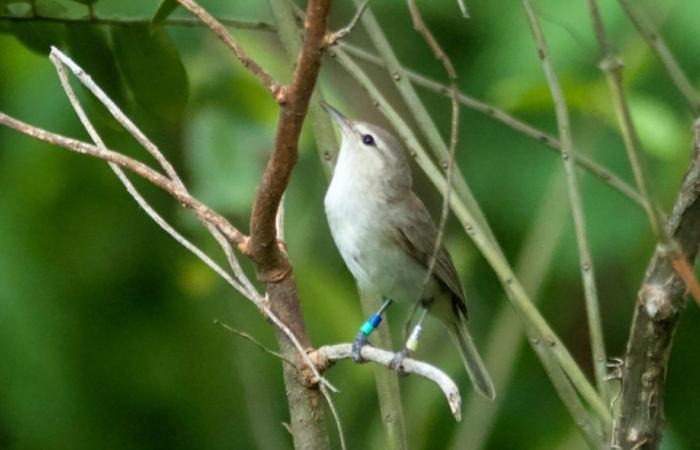
Researchers from the Aves de Noronha Project identified the animals that pose the greatest risks to birds in Fernando de Noronha, as they pose threats to native species. Tejus, rats and cats have caused damage to birds on the island, according to the project coordinator, Cecília Licarião.
“Teju, rats and cats are the biggest threats to wild birds. These animals were introduced into Noronha, they prey on nests, eat birds’ eggs and chicks”, said the project coordinator, Cecília Licarião.
Monitoring is carried out in partnership between the project and the Chico Mendes Institute of Biodiversity (ICMBio). They installed cameras, so-called “photo traps”, to monitor regions with the greatest presence of birds 24 hours a day. The equipment was placed at Forte São Joaquim do Sueste and Ilha do Chapéu.
Cecília Licarião said that the masked booby, which has the scientific name of Sula dactylatra, reproduces on the ground on the secondary islands of the archipelago. This resident bird has been trying to reproduce on the main island of Fernando de Noronha, but tejus have preyed on the birds’ eggs.
“We placed camera traps and confirmed predation on booby nests, as tejus feed on eggs. This proof will enable ICMBio to set up strategies to control exotic species in this area of Forte São Joaquim do Sueste to reduce predation”, declared the coordinator.
Predation can inhibit boobies from reproducing on the main island. “Birds spend energy on courtship, build the nest, lay eggs and, if the birth of the chicks does not work out, the bird will understand that this is a dangerous area. The birds will return to the secondary islands, but these regions are small”, said Cecília.
The cameras also caught the lizard known as “mabuya” preying on sebito eggs. “We saw a mabuya drinking sebito’s eggs. It is a situation of predation, but this is a natural relationship. These animals have existed on the island for many years. Mabuya would never be able to extinguish sebito, which has defense strategies”, said Cecília.
She also stated that the atobá does not have strategies to combat the teju, which is a more prepared animal, came from the continent and is stronger. “There are two predation relationships, one is welcome; and the other is negative,” she assessed.
The researcher suggested controlling introduced species, such as tejus, rats and cats. She stated that this is difficult work and must be carried out in the medium and long term. She also stated that ICMBio has carried out actions in this area.
VIDEOS: most viewed in the last 7 days in Pernambuco
Tags: Tejus rats cats biggest threats birds Fernando Noronha researcher Living Noronha





